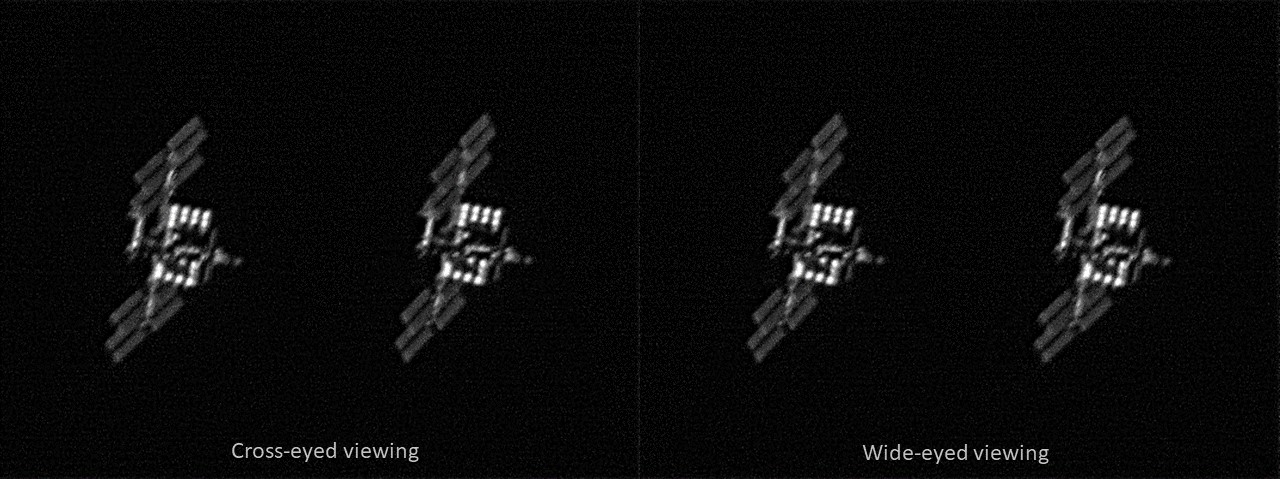Observation by Chris Hooker: ISS in 3 dimensions!
Uploaded by
Chris Hooker
Observer
Chris Hooker
Observed
2020 Mar 31 - 19:47
Uploaded
2020 Apr 04 - 11:48
Objects
Spacecraft
Equipment
- 254 mm Newtonian
- 2x & 1.6x Barlows, stacked
- ZWO ASI174MM camera
- Baader IR-cut filter
Exposure
0.18 msec
Location
Didcot, Oxfordshire
Target name
International Space Station
Title
ISS in 3 dimensions!
About this image
This post follows from a comment by Steve Knight that the sequential images of the ISS from 31st March could be viewed to give a 3D effect. There are two ways of viewing such image pairs: "wide-eyed" and "cross-eyed". In the first method, you need to allow your eyes to relax as if you were looking at a distant object, while keeping focused on the images. You will see two of each image, and the trick is to allow the two middle ones to move together and overlap; you are then looking at the left image with the left eye and the right image with the right eye. Once this is achieved, the result is striking, because your brain interprets the view in three dimensions.
Cross-eyed viewing works very similarly, except as the name suggests, your eyes need to cross as if you were looking at something nearer than the screen. Holding a finger up in front of the screen can help with this. You will then be looking at the left image with your right eye, and the right image with your left eye. The images are switched so the net effect is the same as for the other method.
The two pairs are labelled to show which method they are correctly positioned for.
I hope at least some viewers are familiar with one of these techniques, and will be able to achieve a 3D view. Many thanks to Steve Knight for the suggestion!
Files associated with this observation
Like this image
Comments
I'm naturally somewhat cross-eyed which, perhaps, might explain why these forms of 3d images never work for me. Any chance of you producing a red-green pair please? That approach generally works well in my experience.
Even better are cross-polarized images which allow full-colour images. Not an issue here, with a monochrome image, and is technically impossible anyway!
Thanks, Paul
Hi Paul,
I have sent the two images I used to Steve Knight, who suggested the 3D idea initially, because he offered to make such a pair of images for those who find the image-merging techniques tricky. He will probably post the result on his own member's page, so keep an eye out for that.
Best wishes,
Chris
Chris,
Cross eyed viewing gives a good result for me but it is important to cover over the pair that is not being used or things get rather confusing!
David
I'm glad you can see the effect, David. I originally had the two pairs positioned one above the other, but for some reason the website would not allow me to upload an image in portrait format, and insisted on rotating it 90 degrees, which really doesn't work! After a few unsuccessful attempts, I accepted defeat and made a landscape version.
Chris
Copyright of all images and other observations submitted to the BAA remains with the owner of the work.
Reproduction of work by third parties is expressly forbidden without the consent of the copyright
holder. By submitting images to this online gallery, you grant the BAA permission to reproduce them in
any
of our publications.


